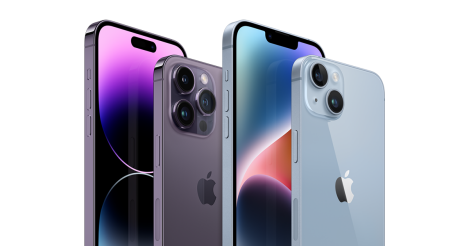Aqara Hub 101 [updated Dec 18 2019]
The Aqara Hub and many of the ‘child devices’ have now been officially launched on Amazon.com for the US market (although now seemingly no longer available), which follows on from the EU version, that seems to have had a limited release in a few countries in Northern Europe, at the time of updating this post, although many people (including myself) have gone for the Hub with the Chinese plugs, and have been toying with them for well over a year now. One thing we’ve noticed with talk regarding the Hub is the amount of uncertainty and confusion surrounding what will and won’t work with the Aqara Hub, along with a lack of information on what can be achieved. So, in this article, we’ll try to cover as many questions as we can, so as to not only prepare those of you that have recently purchased a Hub but also for those who already have one and are a little baffled by the Aqara system.
Setting up an accountOk, this is fairly straightforward, but in order to get the most out of your Hub and any associated devices, you’re going to need to set up an account with either Aqara or Xiaomi via their respective apps – Aqara Home or Xiaomi Home (formerly Mi Home, and henceforth referred to in this article as Mi Home). With regards to the Aqara app, once you have set up an account and are signed in, you need to select a server. You have a few options, which are;
There are certain benefits to using each of these apps, so it’s down to whether you intend to go deeper into the whole Xiaomi Smart Home ecosystem, or just stick with the devices that work with the hub. You need to be signed in to use the Mi Home app, but you need not be signed in to the Aqara app to use it, although if you aren’t signed in, you can’t create scenes or automations.
What’s the difference between Mi Home and Aqara Home?The Mi Home app allows you to add the Aqara hub, but in order to get the complete experience from the hub, you should use the server relevant to the region your hub belongs to. So, if you have a Chinese hub, the hub will work as intended when signed into the Mi Home app, with the server set to ‘Chinese Mainland’. If you have the US or European hub, then the US or EU servers are the best ones to use.
It’s almost the same situation with the Aqara Home app, although as already mentioned, you can still use the app when signed out, also known as HomeKit Mode. The Aqara app has one unique advantage over the Mi Home app that relates to HomeKit mode; To use the Mi Home app, you must be signed in, but you don’t have to be signed in to use the Aqara app. Both the Mi Home and Aqara Home apps only allow you to add devices that are designated for that region, so if you are signed and connected to the US server, for example, you can only add devices that are officially supported for that region. If you sign out of the Aqara app and select HomeKit Mode, then subsequently try to add an accessory, all of the devices compatible with the Aqara hub become available. In one example, the recently released Aqara/Opple wireless switches are only designed for use with the Chinese server, but in the Aqara app, set to HomeKit mode, you can add these. Furthermore, once they’re added, they function perfectly well, even after you sign back in, using the US server.
The Mi Home app does also have a large advantage over the Aqara app as well, although this relates less to HomeKit and is only of relevance if you start diversifying your smart home system to include non-HomeKit devices. With the Mi Home app, regardless of which server you’re connected to, you do have access to more devices that can be added to the app (NOT specifically the hub). So, if you’re signed into the Mi Home app and set to the US server, you can add cameras (eight models at present), smart plugs, smart bulbs from Mi and Yeelight, and Induction cooking plate, air purifiers, a Bluetooth temperature and humidity sensor with an LCD screen, and a selection of robot vacuums. All of these use Wifi (or Bluetooth for the temperature sensor), so they cant use, and don’t require the hub as such.
So, to be clear, as none of these requires the hub, they will therefore not be exposed to HomeKit, but one advantage of having Aqara (or Mijia) devices, is that they can have a foot in both smart home systems. As an example, you might have a Xiaomi smart fan, which isn’t HomeKit compatible, but with the Aqara temperature and humidity sensor, which does work with HomeKit, it can also control the smart fan within Mi Home. Here are a couple of examples of simple automations you can create in the Mi Home app with either the Aqara temperature sensor or the Aqara motion sensor;
Aqara temperature sensor and Xiaomi Smart Fan
Aqara motion sensor and Roborock S6 Vaccum
* the 15-minute delay is so that if someone only temporarily left the room/apartment, the vacuum wouldn’t immediately begin cleaning, and only start after the 15 minutes had elapsed without any further motion detection events.
This, of course, means you’re then delving into the Xiaomi world of automation, but if you wanted to control the same fan with an Eve temperature sensor (Eve room), then it wouldn’t be possible, so depending on how deep you go with Mi Home and Xiaomi Smart devices, there could be lots of potential to control more devices beyond HomeKit, but with a HomeKit compatible sensor.
<br /><br /><br /><br /><br />
<br /><br /><br /><br />
The Hub and HomeKitThe Hub itself comes with a HomeKit code, so if you’re at all familiar with adding a new device via the Home app, this will be very easy for you, but it’s recommended that you add the hub to either Mi Home or Aqara Home first, and follow the onscreen instructions. If you have the Chinese model, it will almost certainly start with some voice instructions in Mandarin, but don’t worry, just follow the instructions via your phone, after which once the hub has been added, you’ll be able to change the onboard voice to English, Spanish, Russian, Mandarin and Cantonese. If you get the US hub, the instructions should be set to English by default. Adding the hub will initially give you some instructions on how to prepare the hub for installation, then as per a normal HomeKit installation, ask you to scan a HomeKit code, and from there, the rest of the installation will simply ask you to name the hub and add it to a room within the Mi Home/Aqara app. If you then move over to the Apple Home app, there are a total of two devices added to HomeKit; one for the night light, another as an alarm system, with an alarm icon, The third device the used to be visible, represented the Aqara hub as a ‘Hub’. Prior to iOS13, there was a tile to represent the hub separately from the other two icons. Since iOS13 however, all bridges have been relocated to the Home Settings section of the HomeKit app. To complicated matters, the Aqara hub actually doesn’t show up in the hub section of the app anyway, which we believe is due to the fact the hub is already assigned as two devices, and possibly can’t be both a hub and a device, but that’s just an educated guess. Both the Alarm and the night light will show up in a room other than the one you assigned to them in the Aqara/Mi Home app, so you’re going to have to assign them to the correct room a second time. The night light tile acts like a regular colour light, so control over the brightness and hue of the night light is available, as well as toggling the light on and off. The Alarm tile allows you to arm and disarm the alarm, providing you’ve set the alarm automation up in the Mi Home/Aqara app first (we’ll go through this further down).
Adding devicesThe Aqara Hub works in the same way as the Hue Bridge works in relation to HomeKit, in that the Hub itself is HomeKit compatible, not the devices themselves. This means all of the compatible, Zigbee-based Mijia or Aqara devices that you want to be exposed to HomeKit need to be added to the Hub via the Aqara or Mi Home app. For the purposes of this article, and for the sake of simplicity, we’re only focusing on using the Mi Home app. The process of adding an Aqara device is actually very easy;
Aqara Hub Languageif you’re in possession of the Chinese version of the Hub, it will ship with the Prompter voice set to Chinese, however, it’s easy to change the voice to English.
Which devices work with the Aqara Hub?The Mi Home app allows you to add Aqara and Mijia devices, all of which should be ZigBee-based in order to go through the hub.
Sensors
Switches | buttons
Smart Plugs | Outlets
Lighting
Window coverings
Locks
Miscellaneous
* These are not currently exposed to HomeKit
![Aqara Hub 101 [updated Dec 18 2019] Aqara Hub 101 [updated Dec 18 2019]](https://website-google-hk.oss-cn-hongkong.aliyuncs.com/drawing/article_results_9/2022/3/24/58d2d75e4c347bce92134b916e2ea99e_1.jpeg)
** The Chinese Mi Smart plug Will get exposed to HomeKit when setting to the China server. The Mi Smart Plug for Taiwan and the Aqara Smart plug for the US, which both use the same Type B North American plug, will be exposed to HomeKit when using the Taiwan, US or China servers, but if you use the China server, it will still be exposed to HomeKit, although you will be unable to access the settings for these plugs in the Mi Home app. You can still include these devices in automations within the Mi Home app, however, and you still have full control over the smart plugs in the Apple Home app, so the only thing you will miss in the Mi Home app is access to the settings, and electricity usage monitoring functions.
Aqara app automationsWhilst the Aqara Hub is HomeKit compatible, and you can add HomeKit devices to the Aqara/Mi Home app, the apps themselves are not actually 3rd party HomeKit apps, unlike the Eve app for example. This means that automations that are created in these apps will not appear in the Apple Home app. The one benefit of this, however, is that it means with a little thought into creating automations, or clever use of devices, you can control non-HomeKit devices ‘by association’ as well as having devices work as a connection between the two apps;
Using The Aqara Cube With HomeKit
How does the hub communicate?The Hub itself connects to your home network via Wifi but uses Zigbee to communicate with its child devices. This seems to generally make for a faster, more efficient connection, in addition to making sure your network isn’t clogged up with lots of devices all wanting to connect to your network directly. The Philips Hue system works in the same way essentially. From what we understand, like the Philips Hue implementation of Zigbee using bulbs to act as repeaters for the Zigbee signal, thereby extending the range of the Zigbee network, battery-operated Aqara devices do not extend the network and so they act as a ‘dead-end’ or final destination for the ZigBee signal, however the Smart plugs, and in-wall Single and Double Rocker Switches would act as repeaters, as they are always powered. Even though this isn’t ideal, from our tests, the Aqara hub has a greater reach than we anticipated, so unless you live in a very large property, chances are that one Aqara Hub will suffice. With the eventual introduction of Zigbee 3.0 versions of the sensors, the reach will be great, resulting in an even better connection.
Aqara Home, Mi Home and Siri ShortcutsBoth apps now support Siri Shortcuts. This makes for some interesting uses, especially for devices that don’t get exposed to HomeKit. In the Aqara app, you create scenes, which can then be added to Siri Shortcuts for further automation, or for recalling via Siri. So for example, if you created a scene involving the hub playing a sound, you can trigger this via Siri. With the Mi Home app, you create an automation. This automation can then be added to Siri Shortcuts in exactly the same way. You can read a couple of articles on the process below;
Controlling Your Mi Desk Lamp With Siri Shortcuts
Using Siri Shortcuts in The Mi Home app
What is shown in the Home app when Mijia and Aqara sensors/devices are added (via the Aqara Hub)?In many ways, the rules appear to be the same for many Aqara sensors, as they would any other HomeKit sensors, meaning some additional sensors will appear only in the devices’ specific app and not the Home app, and some appear across all apps. Below is a simple list of the Aqara devices, what sensors they contain, and what is exposed to Homekit, the Home app and 3rd party HomeKit apps (varies depending on the app). We have only included information on devices we have been able to test, so a few devices in the list above don’t have corresponding details in the list below;
Aqara Hub
Aqara Temperature Sensor
Mi Temperature Sensor
Aqara Motion Sensor
Mi Motion Sensor
Aqara Door and Window Sensor
Mi Door and Window Sensor
Aqara Water Leak Sensor
Aqara Vibration Sensor
Aqara Smart Plug
Aqara Wireless Mini Switch
Mi Wireless Switch
Mi Smart Natural Gas Detector
Mi Smart Smoke Detector
Aqara Wireless Relay Controller
Aqara Wireless Remote Switch (Double Rocker – model AK012)
Aqara Wireless Remote Switch (Double Rocker – model AK004)
<br /><br /><br /><br /><br />
<br /><br /><br /><br />
If there’s something we’ve missed feel free to tell us in the comments below and we’ll add them for the benefit of our readers!
![Aqara Hub 101 [updated Dec 18 2019]](https://website-google-hk.oss-cn-hongkong.aliyuncs.com/drawing/article_results_9/2022/3/24/58d2d75e4c347bce92134b916e2ea99e_0.jpeg)


